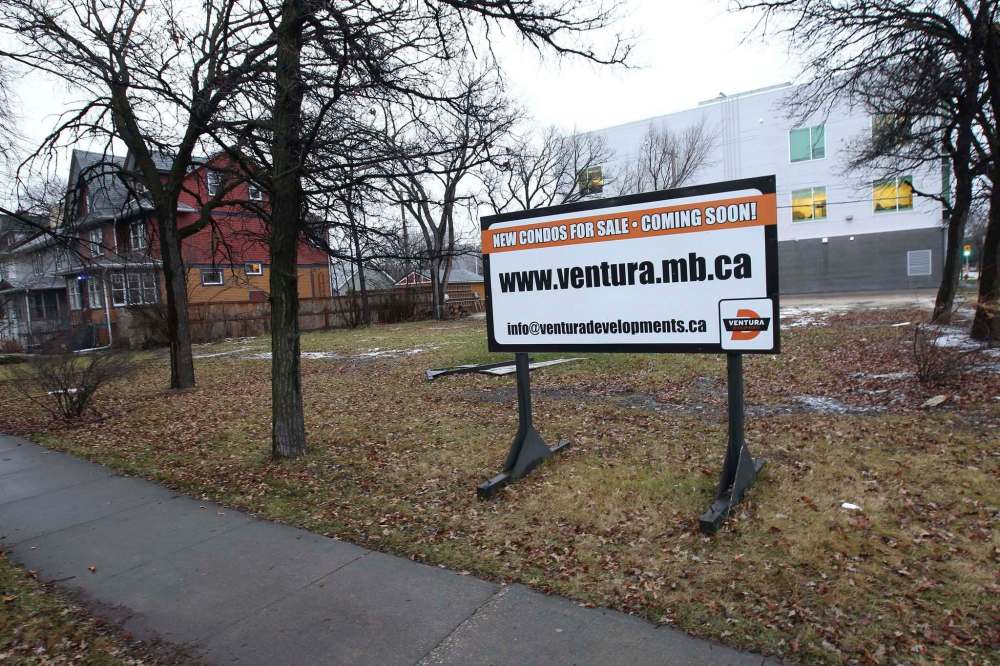Divisive infill guidelines to get makeover
Strategy aims for clear language, less acrimony, city says
Advertisement
Read this article for free:
or
Already have an account? Log in here »
To continue reading, please subscribe:
Monthly Digital Subscription
$19 $0 for the first 4 weeks*
- Enjoy unlimited reading on winnipegfreepress.com
- Read the E-Edition, our digital replica newspaper
- Access News Break, our award-winning app
- Play interactive puzzles
*No charge for 4 weeks then billed as $19 every four weeks (new subscribers and qualified returning subscribers only). Cancel anytime.
Read unlimited articles for free today:
or
Already have an account? Log in here »
Hey there, time traveller!
This article was published 20/02/2018 (2253 days ago), so information in it may no longer be current.
Residential infill development has become a divisive issue in Winnipeg, pitting neighbour against developer and, occasionally, neighbour against neighbour.
Community activists rage against the pitfalls and costs of suburban sprawl, but are often the first to object when a developer wants to put anything other than a single-family home in an older, established neighbourhood.
For critics on both sides, the fault lies with the vagueness inherent in the city’s planning guidelines — OurWinnipeg and Plan Winnipeg — which residents and developers say are routinely manipulated against them.

In response, city hall is moving to fix the problem: embarking on a long-term process to redefine infill with plain-spoken, clearly defined rules all can understand.
Kurtis Kowalke, a senior planner with the city’s property, planning and development department, and the lead on the project, said he recognizes his team has challenges, but the goal is something that’s been accomplished in many other cities.
“This project includes the potential for new policy, the potential for zoning changes, potential for design guidelines, potential for process changes and how we deal with applications, how we advertise applications, how we deal with holding public hearings,” Kowalke said.
“For Winnipeg, it’s forging new ground, but we’re not the first city department in Canada to try and find more clarity and build consensus around this issue. Ultimately, we know you’re never going to please everybody, but if people know what the rules of the game are and what the design expectations are, (we want that) at a minimum.”
Kowalke acknowledged there is a great deal of mistrust of city hall within the community: developers and builders think civic planners are too prescriptive; residents often see those same planners as too closely tied with the interests of the developers.
The guideline project was prompted by a directive to the administration from city council in December 2016 to prepare a residential infill strategy, which is to include: a policy framework to encourage residential infill; planning and design guidelines for residential infill; and a residential infill communications strategy to share information with builders and residents.
In an attempt to start to bridge that divide, Kowalke and his team held a series of small workshops in June with residents groups and other stakeholders, followed by an online survey in the fall, and a larger public policies workshop in January.
“We’re taking a long view, working with neighbourhoods, working with builders, working with realtors in a number of different ways,” Kowalke said. “It’s a slow process, getting out there meeting with people. Trying to build more lines of communication and over time demonstrate that we’re listening, that we’re making strides to address things.”
Developer proposals for infills are supposed to be compatible with the city’s long-term planning document (OurWinnipeg), but Kowalke acknowledged criticism that the document is open to interpretation, which leads to confusion.
“We’ve never taken the time to define what ‘compatible’ means,” Kowalke said.
“Is it colour, height, materials… we’ve never gone through that exercise. We’re trying to determine what are the aspects that determine compatibility. It hasn’t been really clearly defined in any of our documents to date, outside of a few secondary plans.”
Kowalke and his team are now taking the feedback from the public meetings and the survey, and will craft input into a strategy document for council’s consideration before the summer break in July.
The strategy document, Kowalke said, will lay out which goals the department should go after first and set out a timeline, approved by council.
A draft of the report will likely be presented to the same stakeholder groups that were consulted in June, Kowalke said, for feedback before a final report is first presented to the property and development committee, and then council.
aldo.santin@freepress.mb.ca


